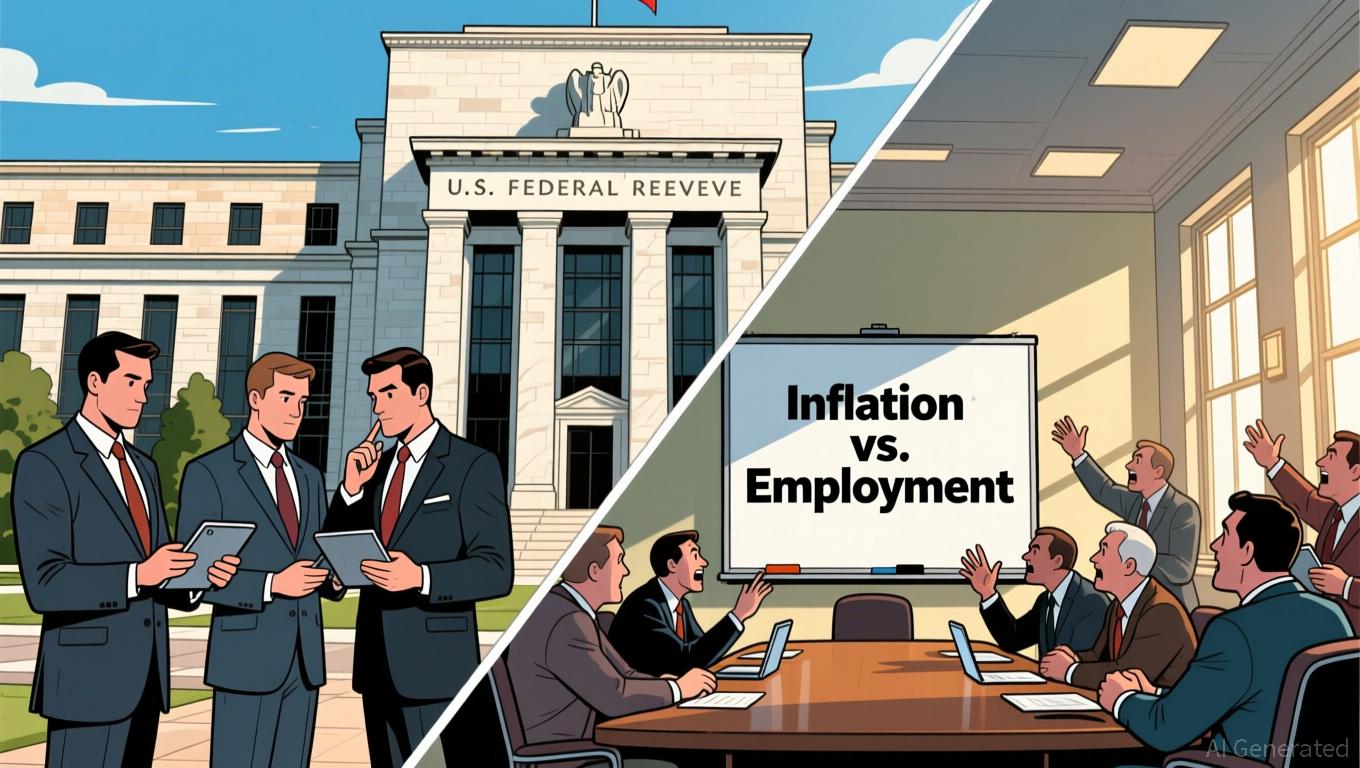Zcash's Scheduled Halving in November 2025 and Its Impact on Privacy-Focused Cryptocurrencies
- Zcash's November 2025 halving reduces block rewards by 50%, aligning with Bitcoin's deflationary model and boosting scarcity-driven price momentum. - Zcash's optional-privacy model outperforms Monero's rigid anonymity, attracting institutional adoption while complying with AML regulations. - Post-halving ZEC surged 1,172% YTD to $589, with analysts predicting $10,000 price targets amid growing demand for transactional privacy. - Privacy coins defy broader crypto downturns, with Zcash's $7.2B market cap s
Historical Performance and Scarcity-Driven Momentum
Zcash’s halving events have historically demonstrated the impact of scarcity on price movements. After the 2020 halving, ZEC experienced a surge exceeding 500%, and in the fourth quarter of 2024, the coin rallied by 92% despite overall market instability
This upward trend is supported by more than just speculation. Zcash’s shielded transactions now make up 28% of its total supply, providing a rare mix of privacy and regulatory adaptability. In contrast to Monero (XMR), which enforces privacy by default and has faced removal from exchanges, Zcash’s optional privacy lets users select between transparent and shielded addresses, making it more attractive to institutions that prioritize compliance
Privacy-Coin Sector Dynamics: Zcash vs. Monero
The November 2025 halving coincides with a broader shift in dominance within the privacy-coin market. In late 2025, Zcash’s market value temporarily overtook Monero’s, reaching $7.2 billion compared to XMR’s $6.3 billion
- Technical Catalysts: The halving event for Zcash has immediately boosted trading activity and price surges. Experts suggest that the reduced block rewards will likely speed up miner consolidation and decrease inflation from new supply, which has historically led to price increases
according to industry analysis.
- Regulatory Adaptability: Zcash’s model of optional privacy fits well with changing regulatory standards, especially in regions focused on anti-money laundering (AML) measures. Monero’s strict privacy, while effective, has limited its acceptance among institutional investors
according to market reports.
- Influencer Endorsements: Prominent voices in the crypto space, such as analyst Arthur Hayes, have brought more attention to Zcash, with Hayes forecasting a potential price of $10,000 per ZEC—a 1,700-fold increase from its November 2025 value
according to analyst commentary.
Broader Market Trends and Investment Considerations
The surge in Zcash following its halving is part of a larger movement: privacy coins have outperformed the general crypto market downturn, with assets like
Interest from individual investors has also grown, with Google Trends indicating record levels of attention on privacy coins. Slava Demchuk of AMLBot observes that even seasoned Bitcoin investors are reallocating some of their BTC into ZEC to maintain financial privacy as regulatory oversight intensifies
Risks and Strategic Recommendations
Despite the strong narrative following the halving, investors should be aware of the risks involved. The privacy-coin market remains highly volatile, and Zcash’s price is vulnerable to global economic changes and regulatory shifts. For example, stricter regulations on privacy features could reduce demand, especially in countries with tough AML policies.
From a strategic perspective, investors might consider a diversified approach:
- Short-Term: Taking positions in Zcash before the halving, given its historical price surges and current momentum.
- Long-Term: Spreading investments across other privacy-oriented assets such as Decred or Secret, which provide different privacy solutions and are valued at lower multiples
- Hedging: Employing derivatives or options to protect against potential losses, especially as the overall market remains exposed to macroeconomic risks.
Conclusion
The November 2025 halving for Zcash is more than just a technical milestone—it serves as a catalyst for reshaping how privacy is valued in the crypto world. By curbing supply inflation and enhancing its role as a privacy-focused asset, Zcash stands to gain from both increased scarcity and greater institutional interest. Nevertheless, the future success of privacy coins will depend on their ability to adapt to regulatory demands while continuing to innovate technologically. For investors, this halving presents a rare chance to participate in a sector that is becoming increasingly vital to the evolution of decentralized finance.
Disclaimer: The content of this article solely reflects the author's opinion and does not represent the platform in any capacity. This article is not intended to serve as a reference for making investment decisions.
You may also like
Fed Faces a Test of Trust: Managing Divided Rate Views and Ethical Controversies
- Fed's October rate cut revealed 10-2 policy split, balancing inflation risks against labor market weakness amid 2%+ inflation. - Ethics scandal emerged over Kugler's stock trades during blackout periods, triggering IG investigation and accountability concerns. - Political tensions intensified as Kugler's resignation accelerated Trump-aligned Miran's board seat, complicating policy governance. - December meeting faces uncertainty: some advocate 25-basis-point cut for labor support, while others warn again

Ethereum News Today: Ethereum Faces Liquidity Battle: Bulls Hold the Line at $3,100 While Bears Anticipate Further Drops
- Ethereum (ETH) struggles near $3,100 as traders monitor key liquidity zones amid 11% 7-day losses and cautious market sentiment. - ETF outflows ($74M for ETH, $373M for BTC) and institutional caution highlight waning investor confidence and liquidity challenges. - Technical analysts debate $2,904–$2,916 "buy zone" potential vs. bearish risks below $3,450, with consolidation phases expected before recovery. - Fed policy uncertainty (46% Dec rate cut chance) and EIL upgrades offer limited optimism as bears

Gundlach Cautions That Inflated Markets and Unstable Loans Could Trigger a Financial Crisis
- Jeffrey Gundlach warns U.S. equity market is "least healthy" and predicts private credit crisis due to "garbage loans" and weak underwriting. - He advises 20% cash allocation, reduced AI/data-center speculation, and compares private credit growth to 2006 subprime crisis, citing recent firm failures. - Recommends rebalancing portfolios: 40% global equities, 25% non-dollar bonds, and 15% gold as hedge amid dollar weakness and inflation. - Criticizes AI mania as "dot-com bubble" repeat, with NYU's Damodaran

Mexico Thwarts U.S. Cartel Raids, Cites 1848 Lesson on National Sovereignty
- Mexico's President Sheinbaum rejects Trump's cartel strike proposal, invoking 1848 sovereignty lesson to defend national autonomy. - Tensions escalate as Mexico removes U.S. contractors' "Restricted Area" signs near Rio Grande, citing border disputes and environmental concerns. - Trump's hardline drug rhetoric clashes with Mexico's sovereignty stance, highlighting strained U.S.-Mexico relations over border security and governance. - Sheinbaum balances U.S. cooperation with sovereignty defense, while Trum
